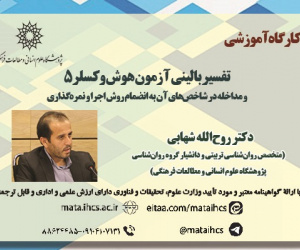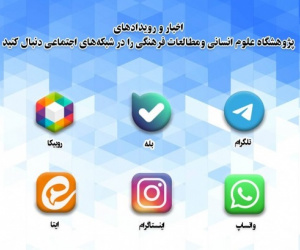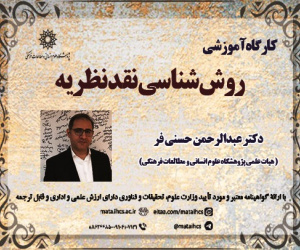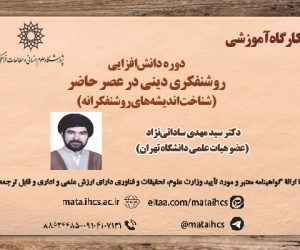Translating the Qur’anic Hypotext into a Religious Dramatic Hypertext: A Case Study of the TV Series Sahebdelan (2006) [The Spiritualists] (مقاله علمی وزارت علوم)
درجه علمی: نشریه علمی (وزارت علوم)
آرشیو
چکیده
The concept of translation encompasses a broad spectrum, including various forms of textual adaptation and adjustment that occur across languages and cultures. Within this spectrum, adaptation and imitation are also considered as part of the translation family. This study, conducted using a comparative, descriptive-analytical method, seeks to explore the issue of adapting a contemporary religious drama from Qur’anic narratives, employing Gérard Genette’s theory of hypertextuality. It examines the structural and thematic aspects of the hypertext in question—the television series Sahebdelan ( The Spiritualists ), directed by Mohammad Hossein Latifi (2006)—and its relation to its hypotext, the narratives of the Qur’an. The aim is to determine the extent and manner of the Qur’an’s influence on the adapted hypertext and to analyze the types of transformations that have occurred. The findings reveal that, based on Genette’s categorization of transtextual relationships, this form of translation from hypotext to hypertext constitutes a recreation of parts of the lives of certain prophets in the Qur’an in the format of a television drama. This recreation—shaped by filmmaking motives, media constraints, target audience, and the purpose of the series—has involved substantial changes to narrative elements such as characters, events, time and space of narration, and intertextual connections. These transformations have enabled the transmission of Qur’anic themes and messages in a contemporary and accessible language for today’s viewers. The impact of Qur’anic narratives in shaping the content and themes of this dramatic work has been significant, making it a prominent example of religious adaptation.ترجمه از پیش متن قرآن کریم به بیش متن نمایش دینی: مطالعه موردی سریال «صاحبدلان»
مفهوم ترجمه بسیار گسترده است و طیف وسیعی از تطبیق و تعدیل های متنی را که در زبان ها و فرهنگ ها رخ می دهد، در برمی گیرد. در این میان، اقتباس و تقلید نیز به عنوان عضوی از خانواده ترجمه به شمار می روند. این پژوهش که به شیوه تطبیقی-توصیفی- تحلیلی انجام می شود در صدد است با رویکرد بیش متنیت ژرار ژنت به مساله اقتباس یک نمایش دینی معاصر از قصص قرآنی بپردازد و جنبه های ساختاری و محتوایی بیش متن موردنظر- مجموعه تلویزیونی صاحبدلان به کارگردانی محمدحسین لطیفی (1385)- را با پیش متن خود یعنی قصص قرآن بررسی کند تا میزان و نحوه تاثیرگذاری قصص قرآن بر بیش متن اقتباسی مورد بررسی مشخص و نوع تغییرات ایجاد شده تحلیل شود. نتایج نشان می دهد که بر طبق دسته بندی ارائه شده از سوی ژنت برای روابط ترامتنی، این نوع ترجمه از پیش متن به بیش متن به بازآفرینی بخشی از سرگذشت برخی از پیامبران قرآن در قالب نمایش تلویزیونی پرداخته است؛ این بازآفرینی، با توجه به عوامل و انگیزه های فیلمسازی، به اقتضای محدودیت های رسانه ای، نوع مخاطبان و هدف فیلم با ایجاد تغییرات گسترده در عناصر داستانی؛ شخصیت ها، وقایع داستان، زمان و مکان روایت و روابط بینامتنی و … توانسته است مضامین و پیام های قرآنی را به زبانی معاصر و قابل فهم برای مخاطبان امروز منتقل کند. تأثیر قصص قرآنی در شکل گیری محتوا و مضامین این اثر نمایشی، نقش بسزایی داشته و آن را به نمونه ای برجسته از اقتباس دینی تبدیل کرده است.







